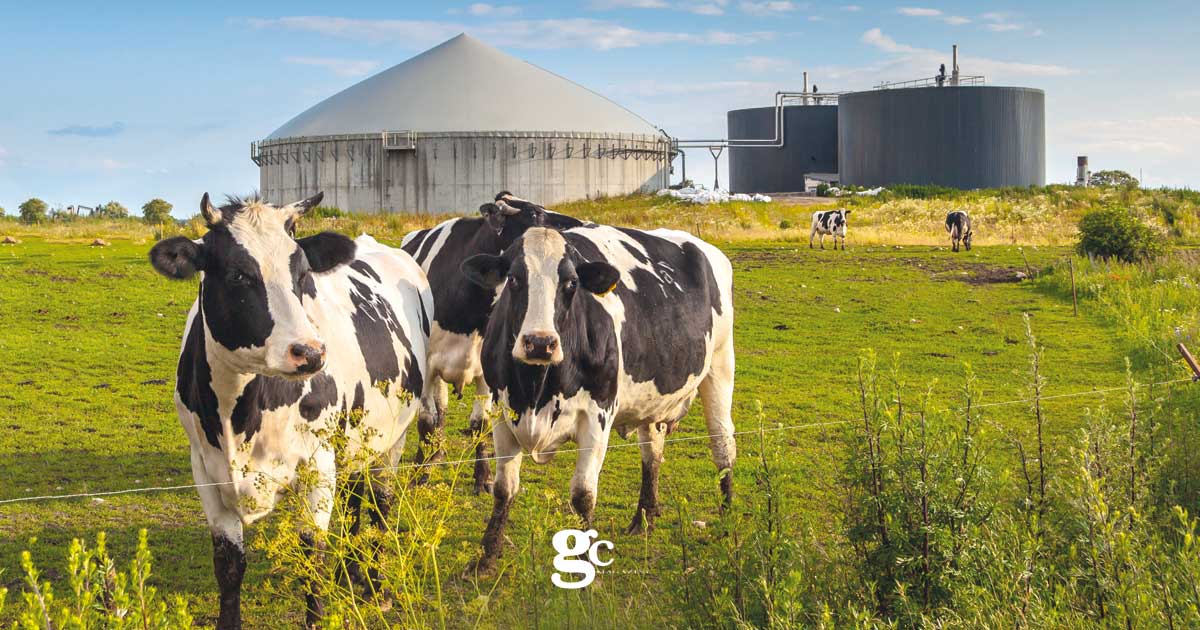27 January 2023

A path to follow for the environment and an opportunity for farmers and agricultural entrepreneurs
The Italian and European scenario towards energy transition cannot disregard a renewable source, not always in the limelight like others, yet essential: we refer to biomethane, crucial yet relatively unknown.
But what is biomethane and how is it produced?
Biomethane is a gas derived from biogas that has undergone an upgrading process, involving refining and purification. This treatment enhances its qualities to match those of natural gas, making it suitable for injection into the natural gas grid. It originates from the decomposition and fermentation of agricultural biomass (dedicated crops, by-products, agricultural residues, and animal manure), agro-industrial wastes (by-products from food processing chains), organic fraction of municipal solid waste, and even sludge from wastewater treatment plants. The treatment occurs in an anaerobic digester (an oxygen-free environment) that produces biogas, initially low in energy content (only 40% to 60% methane, 40-60% CO2, and traces of other compounds). This biogas is then purified to produce biomethane, which is completely eco-friendly and ready to be injected into the natural gas distribution network. The advantages of biomethane are numerous from both environmental and logistical perspectives: it emits almost no particulate matter, reduces CO2 emissions compared to traditional fuels, can utilize existing methane infrastructure for transport, and reduces dependence on foreign imports. Moreover, it exemplifies a perfect model of circular economy.
Aligned with the principles of circular economy, significant benefits also accrue to producers. Following detailed technical deliberations, the European Commission has approved a new incentivization regime for biomethane production. Financed through the Pnrr with 1.7 billion euros, this program supports the construction of new sustainable biomethane production plants or the conversion of existing facilities, in line with European directives outlined in the RePowerEu plan.
This approach primarily focuses, though not exclusively, on biogas production linked to agricultural activities and includes a 40% contribution to investments and an incentivizing tariff on biomethane production for 15 years in general.
On this topic, Minister Cingolani signed a ministerial decree on August 5th last year, interpreting the March 2, 2018 decree on incentives for biogas production. This clarification addresses certain aspects related to the application of the 2018 decree, aimed at incentivizing biomethane use in the transportation system through an obligation mechanism for entities using fossil fuels. Specifically defined is the point at which the right to recognition of the incentive for biomethane production accrues and the deadline by which this right must be exercised (set for December 31, 2023), failing which it would lapse. Together, these measures will allow the agricultural sector to significantly contribute to achieving decarbonization goals, reducing foreign gas dependency, and enhancing supply security.
With data in hand, Simone Ruffinatto, vice president of ACEPER, reaffirms the belief that biomethane can and should be a winning strategy: “There can no longer be any doubts about the path to take – he emphasizes. The environmental benefits are clear: reduced CO2 production and decreased reliance on non-renewable fossil fuels. But beyond the ecological benefits, transitioning to biomethane production also represents an extraordinary opportunity for Italian farmers. The virtuous cycle created by utilizing agricultural waste biomass enables them to fully engage in the circular economy as protagonists, accessing significant incentives that Europe has put on the table for an extended period. I would say it’s a train we cannot afford to miss.”
According to estimates from the European Biogas Association (EBA) and Gas Infrastructure Europe (GIE), there are approximately 20,000 biogas and biomethane plants in operation across Europe.
As of October 2021, there were 1,023 biomethane production plants in Europe (compared to 729 in 2020), with an increase in 2020 mainly driven by France (+91), Italy (+11), and Denmark (+10).
Italy counts 27 biomethane production plants, of which 23 are already connected to the grid and 4 awaiting connection, with a total production capacity of 25,445 cubic meters per hour, equivalent to approximately 220 million cubic meters annually.
www.eticanelsole.it
Taken from Green Company Magazine (Volume 8) – see all magazine issues

Press review
For information


